


|
| |
Presentation
of Basque strength
Soka Tira (the rope pulling)

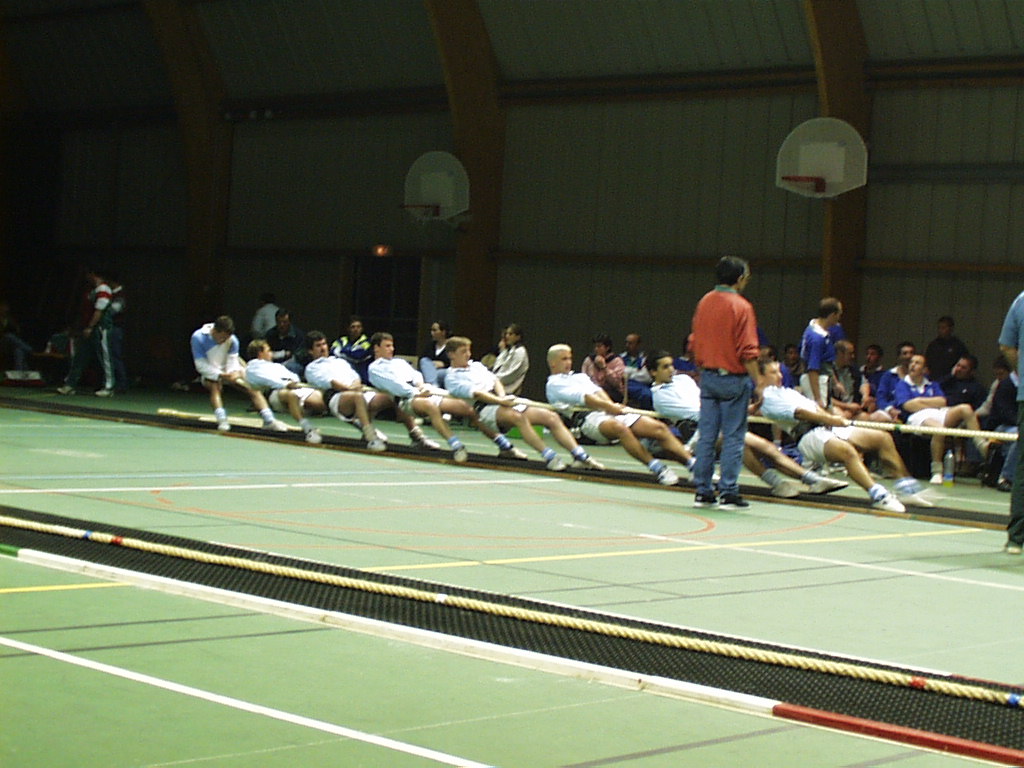 |
Its history goes up from Antiquity.
It is at the end of XIXth century that the rope pulling knows its apogee.
Between 1900 and 1920, during 5 Olympiads, this game is even an Olympic discipline.
Internationally, there are 2 surfaces of rope pulling: on carpet and grass.
The rope pulling is one of the rare Basque collective sports.
Two teams of eight men clash themselves. Each team is weighed beforehand so both equips
have the same weight and the pulling is thus equitable. There are several
categories: 560 Kg, 600 Kg, 640 Kg... The winner is the team whose succeeds in tracting
the opposing team 4,00 meters of the starting line. There are two rounds
and teams switch side between rounds. This game progressed much more on technical level.
|
Lasto Altxari
(the lifted hay)

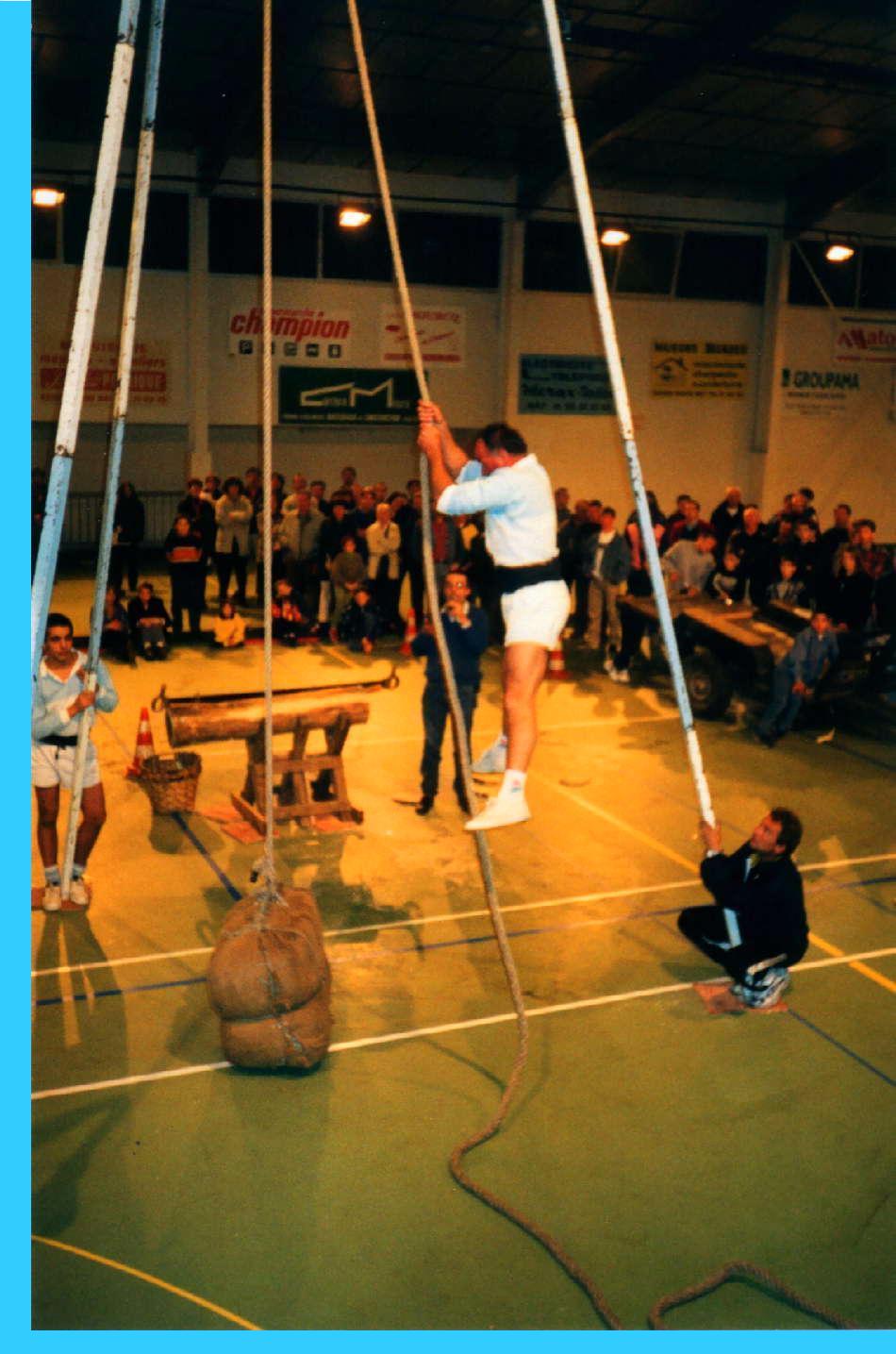 |
This game symbolizes the work carried
out by the Basque to store the hay. The hay bundle was hoisted from the cart
to the attic, using a rope. The levors of hay hoist hay bundle of 45 kg,
parallelepipedic shape, to a height of 7 meters, the greatest number of times in
a given time. The lift is accepted only when the node of the bundle touches the
pulley and that at the end of the descent, the bundle touches the ground. |
Lasto Botatze
(the launched of hay bundle)

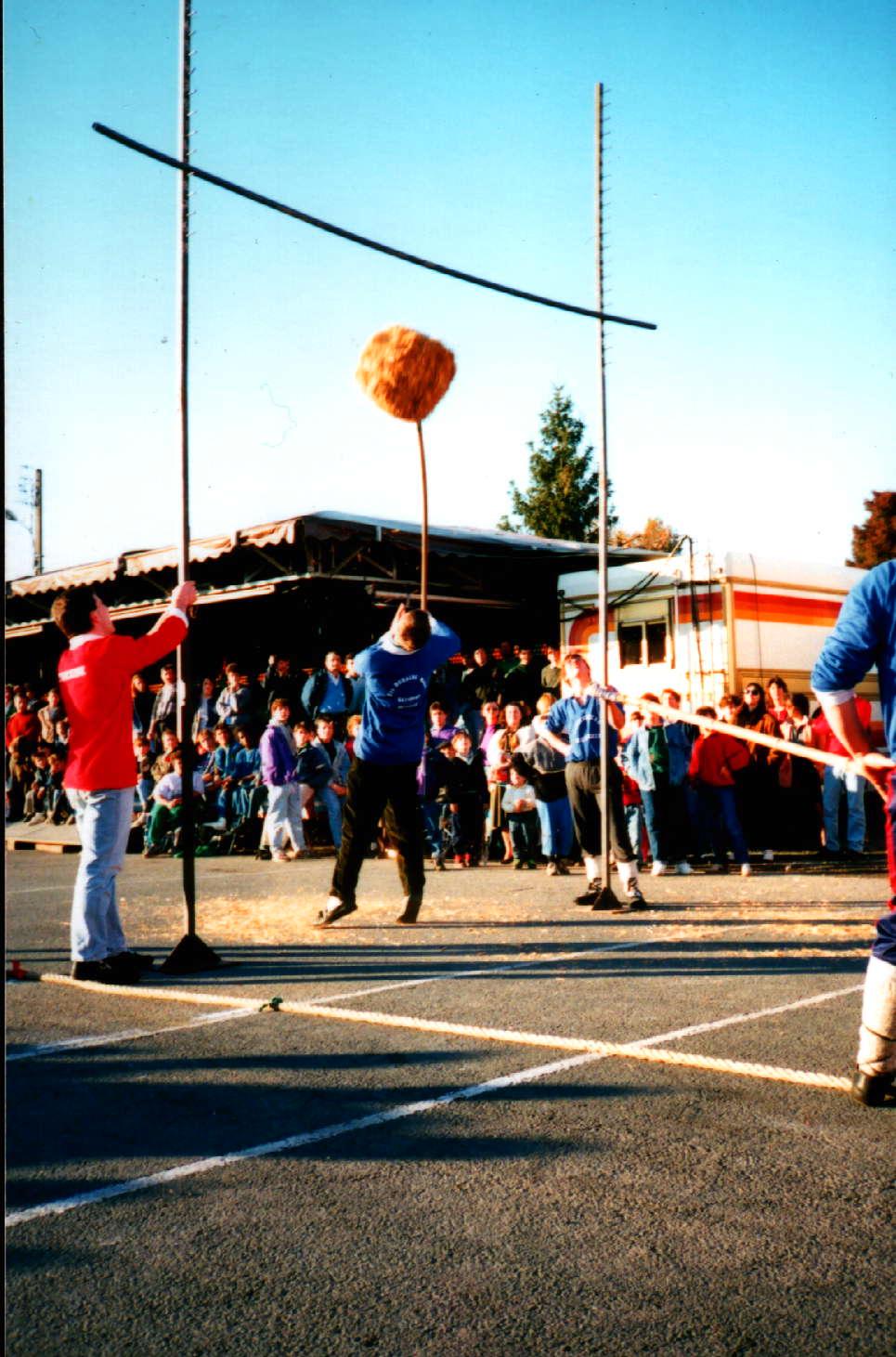 |
This game consists in doing jump over a
horizontal bar, a hay bundle.The latter weighs from 12 up to 13 kg and must be seized using
a fork. For each height, the competitors haves three attempts. The winner is the one
whose reaches the highest height without falling the horizontal bar. The origin of
this game comes from the fact that the peasants who stored the hay bundles in the
attics had to launch them using a fork to reach the floor of the attic,
often located at a relatively important height. |
Zakulariak (the race with
the bag)

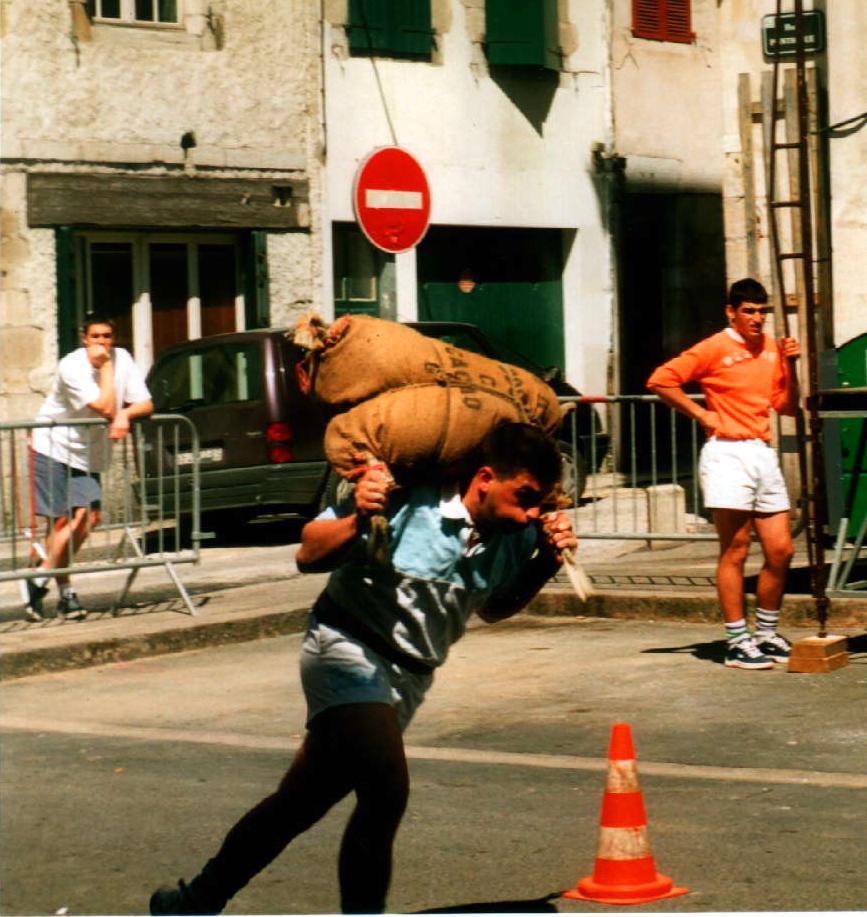 |
For each team, a player has to run
a certain distance with a corn bag of 80 kg on the back. It is then an individual race.
There is also a team race, with three teamates whose will take turns. The goal is to
carry out as fast as possible the indicated course. The origin of this game comes from
a Community work between young people. It was necessary to empty the cart and
then to lift up the bags to the attic. |
Orga joko
(the game of the cart)

 |
This sport recalls a frequent
incident: the stagnation of a cart. The animal which cannot always carry out the operation
of release, it is thus the man who try to desenlize the cart with a lever, by lifting it up
to make it swing. This game kept this principle. A strong man must lift up on his front
armlevers an agricultural cart and make it swing on the tiller, only part of the cart
in contact with the ground. The man chooses the direction of rotation which is appropriate
to him best. He goes at his proper rate and will stop only when the weight of the cart (350 kg)
will become unbearable or as soon as a wheel will touch the ground. |
Ontzieramatea
(milk cans)

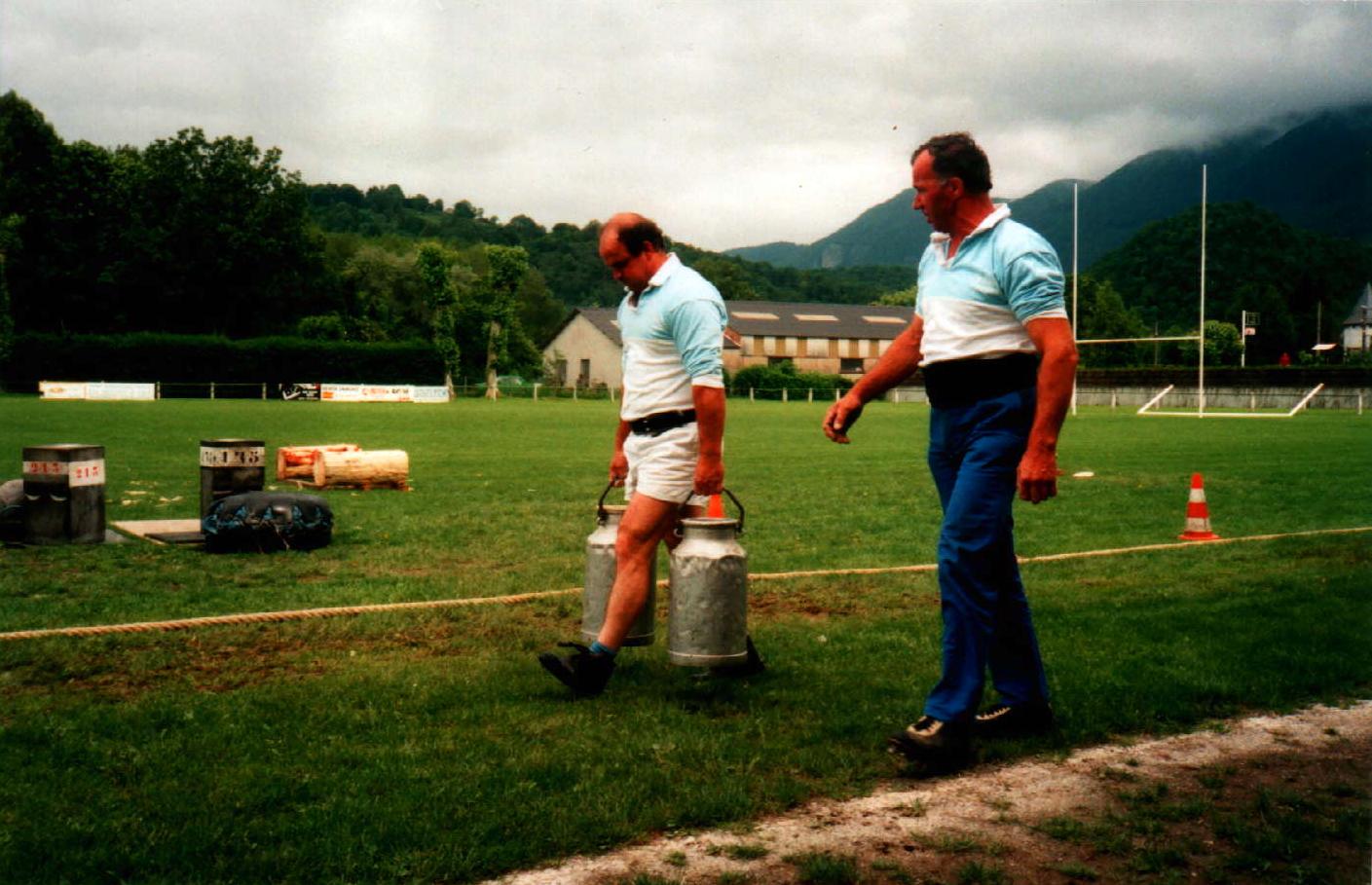 |
For a long time, the Basque farm
were inaccessible to the trucks collecting milk, the peasants had then to carry the
production of their cows in large milk cans to the road. Here is thus the origin
of the game for which we uses cans filled with sand and weighing each one 41 kg.
The sportsman does not have limits of time to realize his exploit. With a can
in each hand, he must walk the longest possible distance, until an exhaustion. |
Unkudia edo
ingude (the lifted of the anvil)

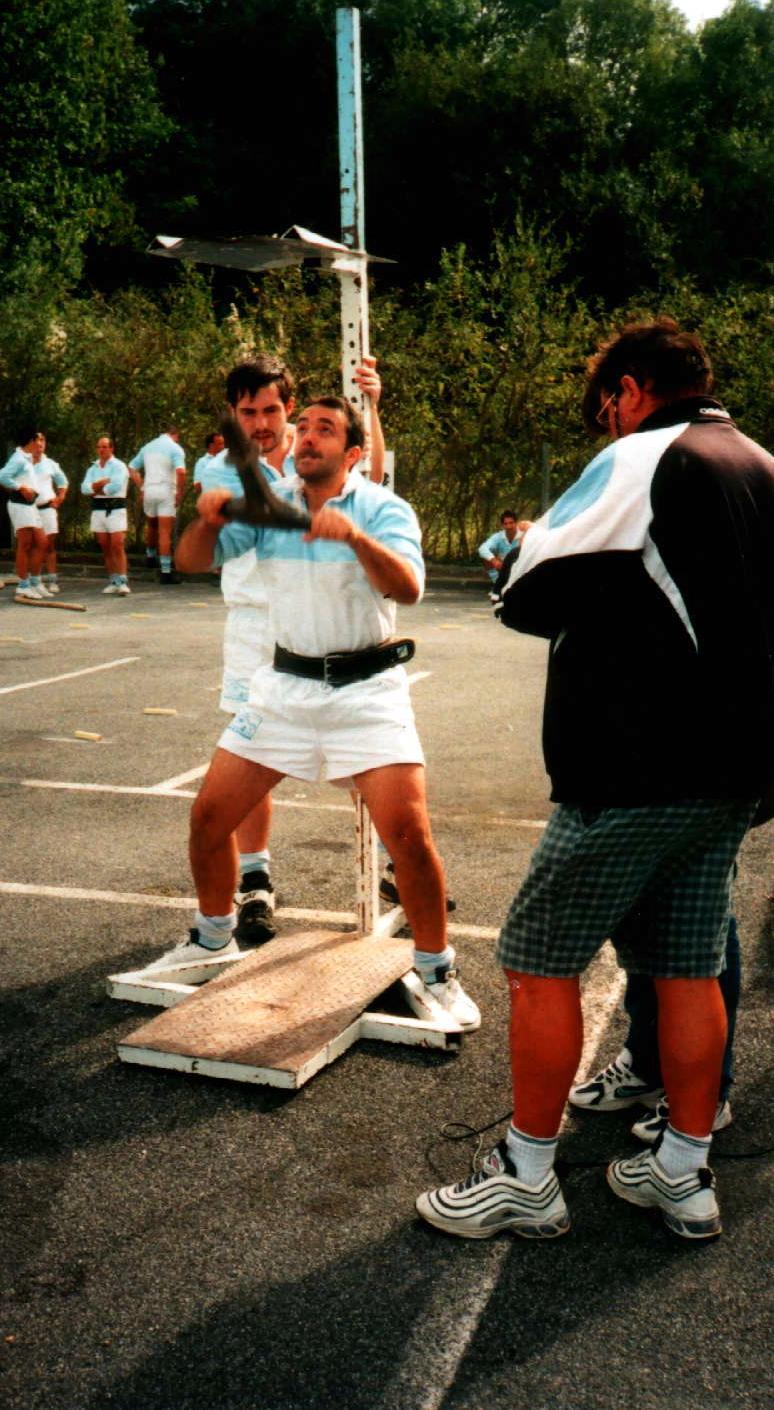 |
By tradition, the blacksmiths were
accustomed to move with their anvil on the shoulder. Their meetings were almost
always born from the challenges in order to determine which was strongest. For the
game, there is a specific equipment constitutes, on the ground, of a base, with a metal stemon the
back of the player, above an adjustable sheet acropeing to the size of the sportsman,
under which he places himself. The sportsman will have in a limited time, lifting up
the maximum of time the anvil weighing approximately 18 kg. The survey is declared good
when the anvil strikes alternatively sheet then the base. One of the first difficulties
resides in the successive movement to be rectified and to bend down (torture on the level
of the kidneys) |
Arpana
(the long saw)

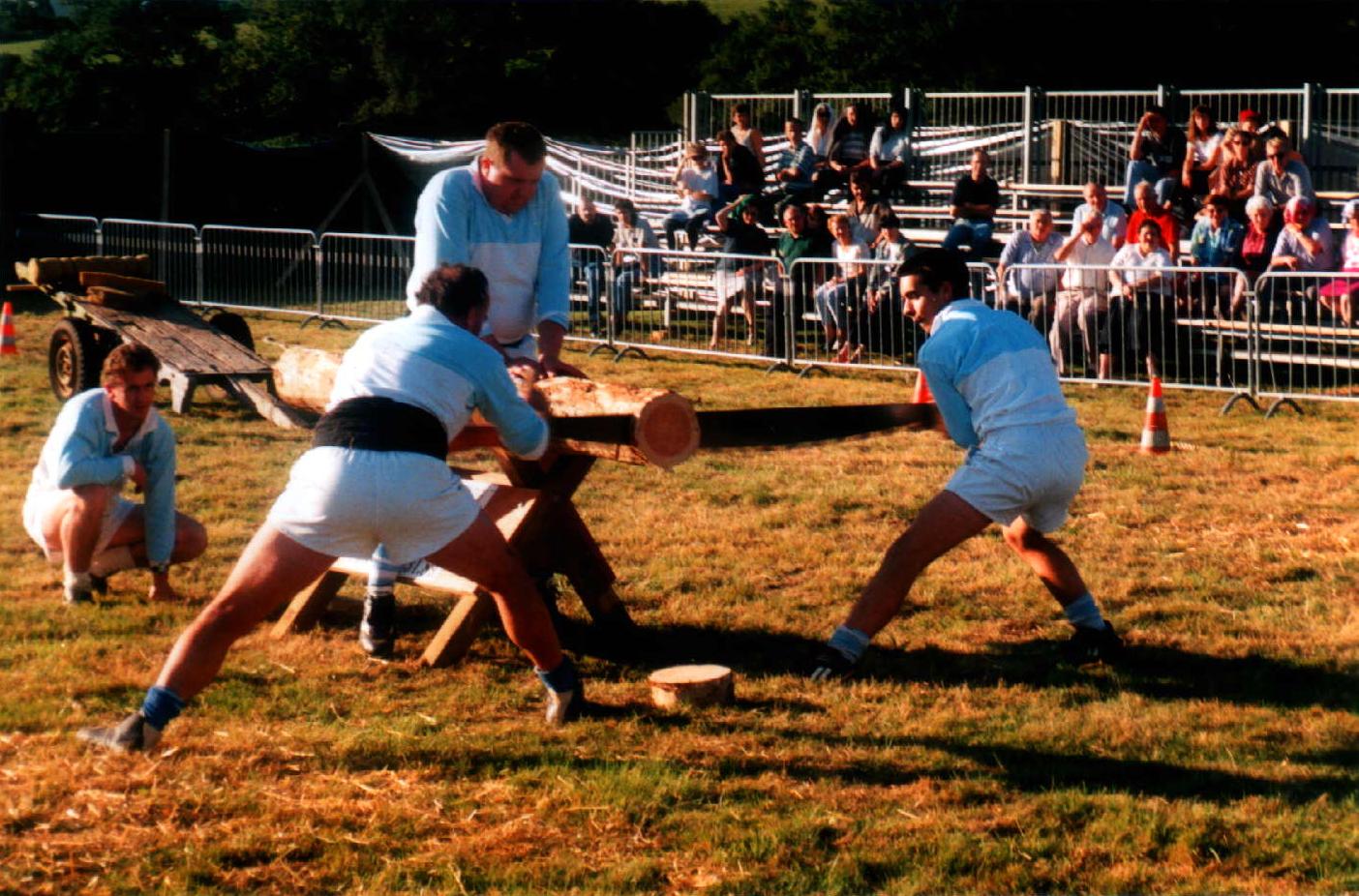 |
This discipline requires a long saw
with impressive teeth and an excellent coordination between the two members of the team.
It is a chalenge of physical resistance and speed. The competitors must cut discs
in the trunk which is fixed on a base. A number of required discs must be obtained
as soon as possible. Generally, wood used is beech. |
Harrijasotzaleak
(the stone levor)

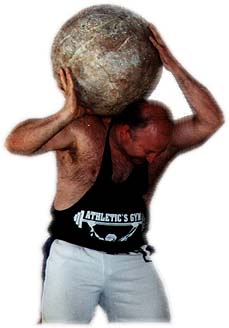 |
By using his force, the athlete
must hoist on his shoulder a very heavy stone. Working in the quarry was one of the activities
which generated a multitude of occasion of challenges. The stones follow standards and are
made of granite. After having left up the stone, this one must rest on the shoulder of the
lifter, then, if it is a round stone (generally 100 kg), it will make it describe
circles around his neck, but, if it is parallelepipedic, he will put it on his shoulder by inclining
the body. |
AIZKORA (the lumberjack)

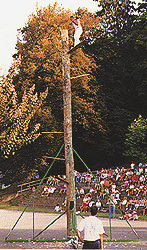 |
This game comes from Canada
and consists in doing a cut with the axe on a trunk verticaly erected. It is first
of all necessary to climb the highest possible thanks to notches made with the axe and in which
are engaged small planks. At the desired height and on balance on a small plank, a cut is
practised in order to decapitate the top of the trunk. Nowaday, the recordman of the world,
Jose Vicondoa, is a Basque. This record was carried out with a trunk 13,60 meters height. |
|
|



